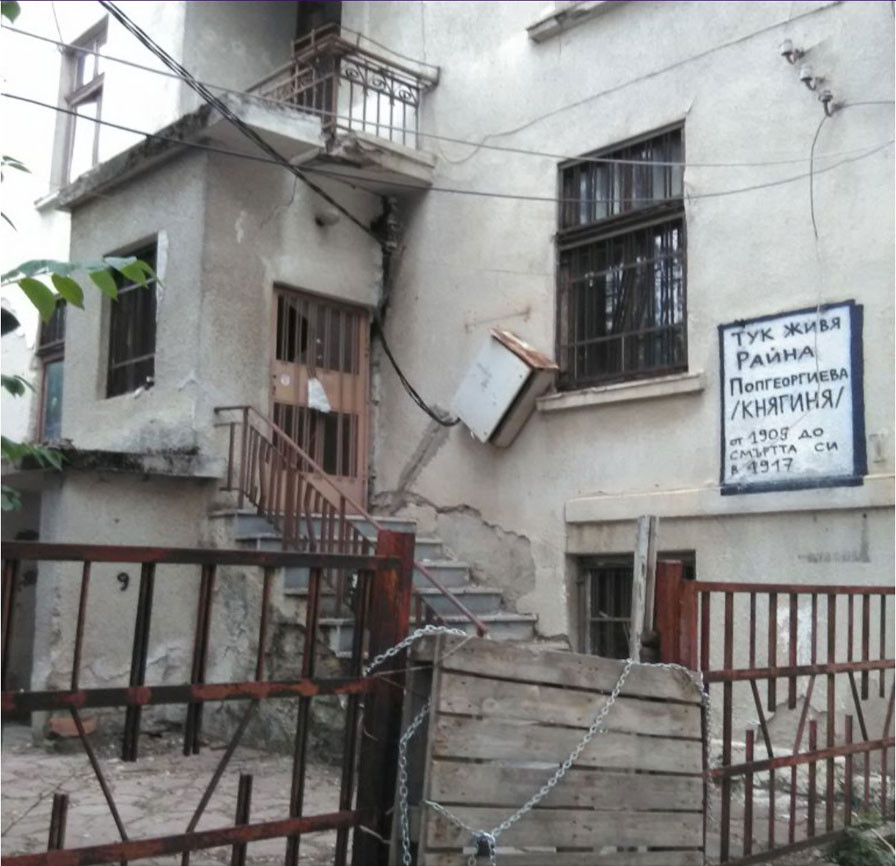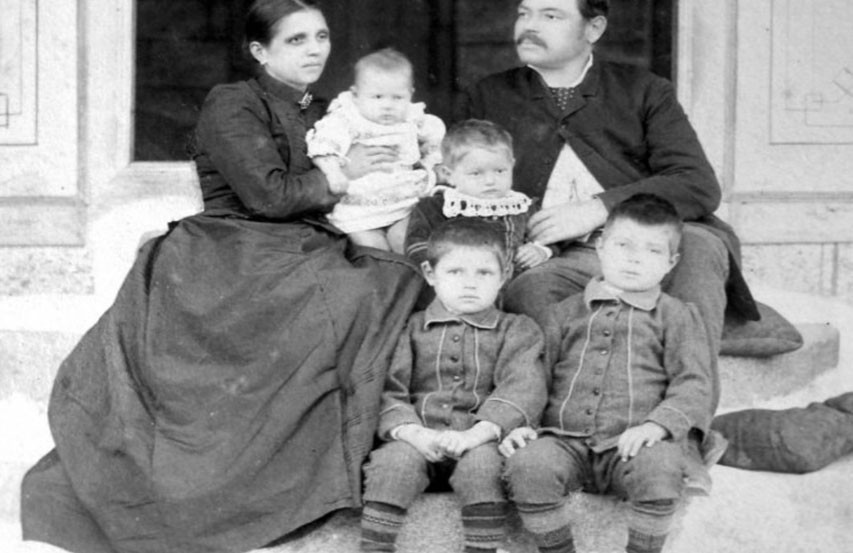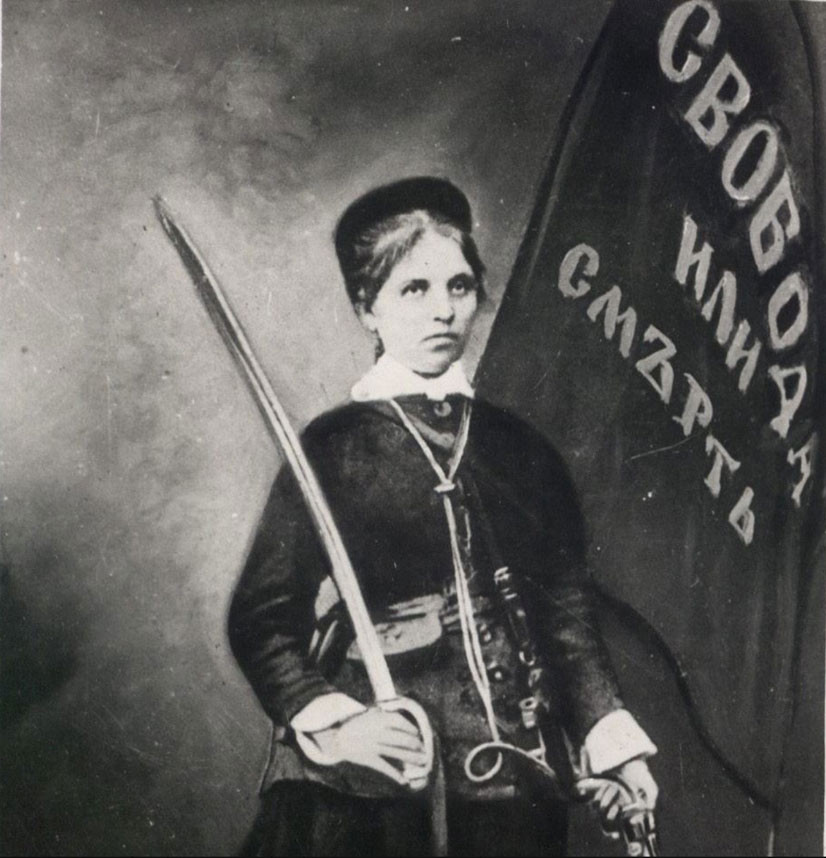Rayna Knyaginya, the woman who embroidered the flag symbolizing the national ideal of liberty, will also be remembered for the noble mission she dedicated herself to after the country’s liberation in 1878. Her home in Sofia, which has been turned into a museum, will soon tell the story of her work as the first qualified midwife.
 Rayna Kynaginya moved into her home in Sophronii Vrachanski St. in Sofia in 1898 – after surviving incarceration in a Turkish jail and graduating as a midwife in Moscow. But soon after that her husband Vassil Dipchev was killed after suffering political persecution, and she was left alone with her five sons and her ward Gina. And even though she was afflicted with advanced bone tuberculosis, she delivered hundreds of babies in diplomatic missions but in the poorest quarters of Sofia alike. She also organized the first health education training schools, founded the biggest maternity hospital in the country, taught obstetrics to future midwives.
Rayna Kynaginya moved into her home in Sophronii Vrachanski St. in Sofia in 1898 – after surviving incarceration in a Turkish jail and graduating as a midwife in Moscow. But soon after that her husband Vassil Dipchev was killed after suffering political persecution, and she was left alone with her five sons and her ward Gina. And even though she was afflicted with advanced bone tuberculosis, she delivered hundreds of babies in diplomatic missions but in the poorest quarters of Sofia alike. She also organized the first health education training schools, founded the biggest maternity hospital in the country, taught obstetrics to future midwives.
 “Rayna Knyaginya worked gratuitously for all people who had less than she did,” says Tatyana Doganova-Hristova. “She was always ready to help deliver babies even though she was herself unwell.”
“Rayna Knyaginya worked gratuitously for all people who had less than she did,” says Tatyana Doganova-Hristova. “She was always ready to help deliver babies even though she was herself unwell.”
According to Todor Krustev, mayor of Sofia’s Serdica district, the Rayna Knyaginya museum house will be ready within 18 months with the help of many donations.
“I am hoping to convert the first floor into a museum of Rayna Kynaginya and to put on display a collection of items from her heirs, photographs and documents, the stories they have to tell,” says Todor Krustev. “The focus will not be on her revolutionary activities, but on her work as the pioneer of obstetrics in the new capital of Bulgaria. We shall also tell the story of her sons – who are heroes just like her. On the second floor her relatives suggested we put together a museum of the volunteer force because this is a district where there lived volunteers and people with a contribution to the national liberation efforts. Whether the museum will be interactive, so that children can learn the facts with the help of videos, is something we shall decide once the reconstruction begins.”
 Tanya Doganova-Hristova hopes to see the beautiful portrait of Rayna Knyaginia she admired so much in her childhood on display as part of the museum collection:
Tanya Doganova-Hristova hopes to see the beautiful portrait of Rayna Knyaginia she admired so much in her childhood on display as part of the museum collection:
“I see her as a very beautiful and inspiring woman, and I am talking as a film director,” she adds. “A strong-minded and wise person, a humanist, these are things one can read in her face. I have seen a very big portrait of Rayna Knyaginya in the home of her great-granddaughter Olga Dipcheva. Looking into that face as a child I have felt her great love of people.”
Photos: archive
More than 150 Trabants and other collector cars from the past will parade through the streets of Veliko Tarnovo today for the 14th edition of the Trabant Fest. For the first time, a restored 1928 car belonging to an owner from Pavlikeni will parade..
The introduction of the so-called automatic shared parenting will affect over half a million children, sociologist Donna Picard announced at a press conference on the topic “Mandatory shared parenting – a dangerous experiment with Bulgaria’s children”...
Bulgarians from the BG Folk Dance Club CHEMSHIR in Northern Ireland showcased the diversity and cultural wealth of their homeland and the country in which they have settled through a photo exhibition in the town of Omagh, entitled "Northern Ireland..
The introduction of the so-called automatic shared parenting will affect over half a million children, sociologist Donna Picard announced at a press..
Bulgarians from the BG Folk Dance Club CHEMSHIR in Northern Ireland showcased the diversity and cultural wealth of their homeland and the country in..
More than 150 Trabants and other collector cars from the past will parade through the streets of Veliko Tarnovo today for the 14th edition of the Trabant..

+359 2 9336 661
